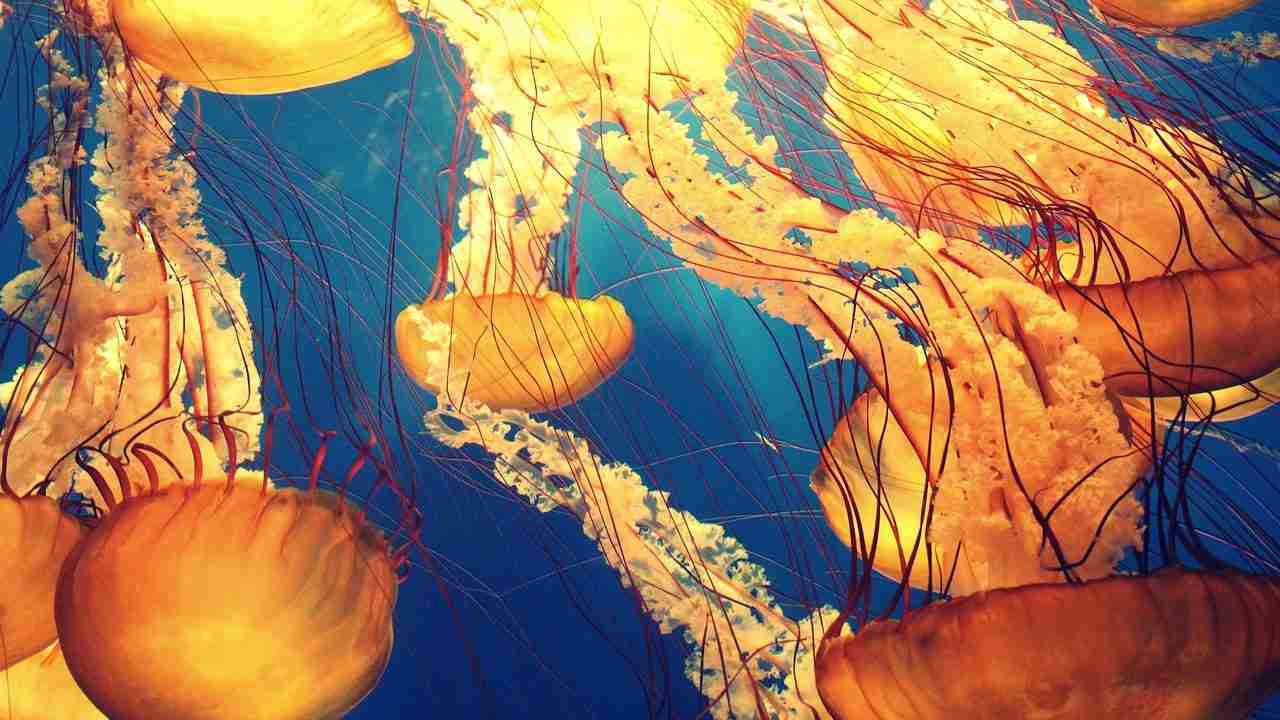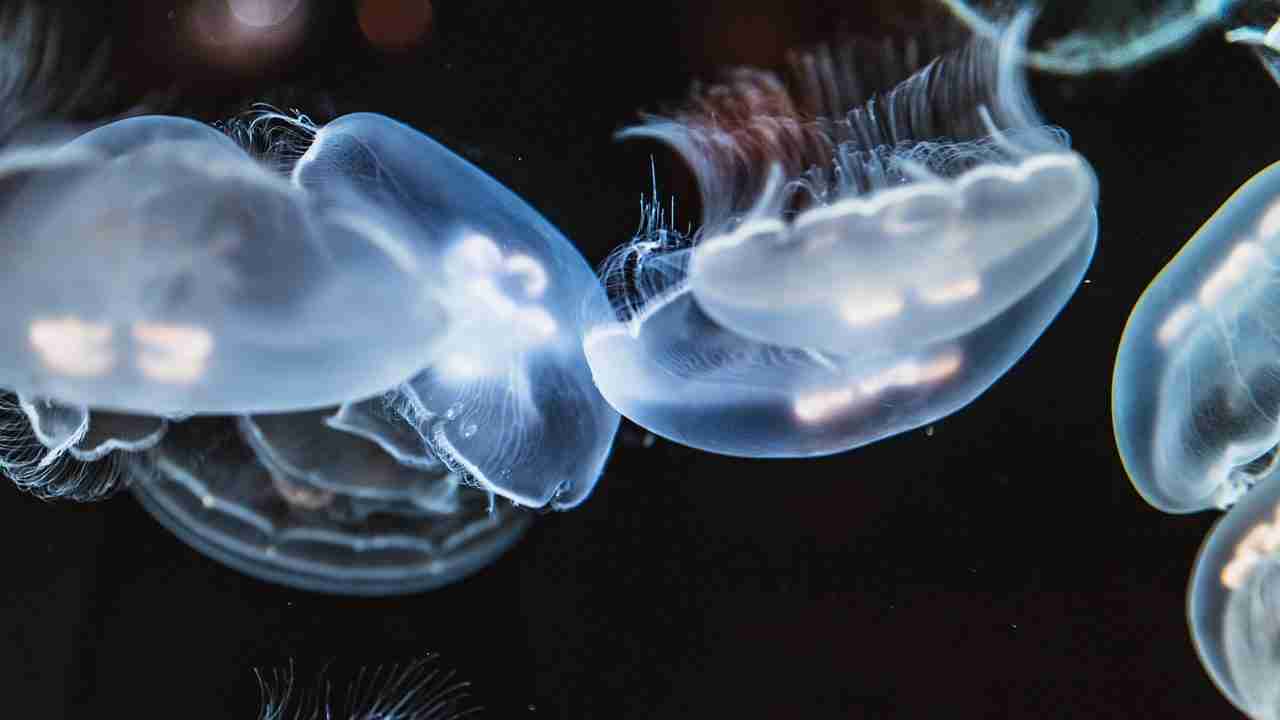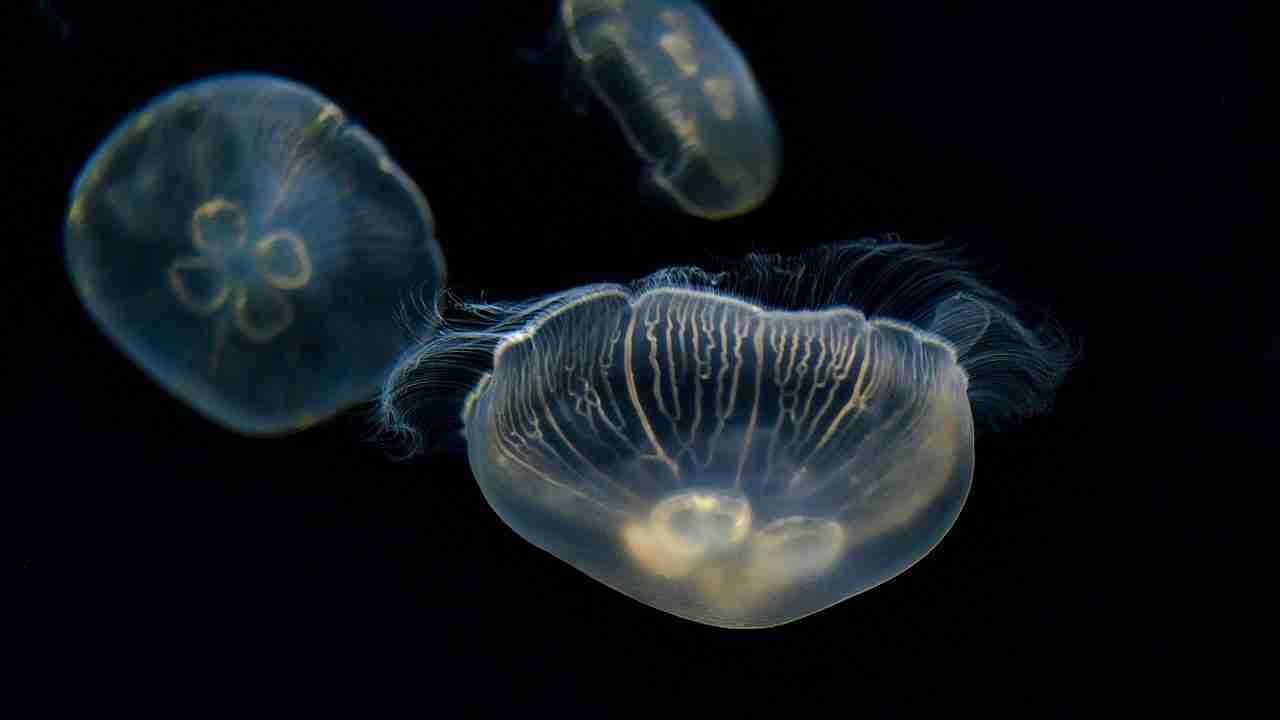25 Fun Facts About Jellyfish You Need to Know
1. Jellyfish got their name from the jelly-like material they are made from called Mesoglea.
Jellyfish name suggests nothing, but a name given to this species. jellyfish are invertebrates, unlike fish. Jellyfish got their name from the jelly-like material they are made from called Mesoglea.
In recent years, scientists have started using the umbrella term sea jellies to clear up confusion.
2. Jellyfish can reproduce both sexually and asexually.
Did you know that fun facts about jellyfish include the fact that their reproduction occurs sexually by releasing sperm and eggs into the water? The eggs then hatch into larval jellyfish, which take several months to mature into adults.
Asexual reproduction involves a process known as fission in which adult jellyfish splits into two or smaller individuals.
3. Box jellyfish have the deadliest venom among marine animals.
A jellyfish sting is a common fear for beachgoers worldwide. They are an estimated 150 million jellyfish stings reported annually. Box jellyfish have deadly tentacles that can grow up to 10 feet long.
The stung object may experience paralysis, cardiac arrest, and even death in just a few minutes.
4. One of the fun facts about jellyfish include that they can grow very, very big.
The largest jellyfish ever recorded had a bell diameter of 2.3 meters and was 27 meters long, which is a quarter of the length of a football pitch.
Lion’s Mane Jellyfish and Cyanea Kappa Lana, also known as Giant Medusa, are the largest species among jellyfish.
5. Jellyfish are 95% water.
The average adult male human is about 60% water, but jellyfish are much simpler than humans. With no organs and bones. jellyfish have sensory organs in their bells and tentacles and a single digestive cavity.
If washed ashore, jellyfish will evaporate due to the high-water content.
6. One of the fun facts about jellyfish is that they can change color.

ability to change color!
Jellyfish can change their color because of changing pigments which trigger an effect called Bioluminescence. To observers, this phenomenon may look exquisite, but Scientists believe the effect is designed to startle and confuse potential predators not to look beautiful.
7. Jellyfish have no organs or bones.
Jellyfish don’t have a heart or a brain either. So, the question is how they survived for such a long time. Although jellyfish don’t have proper organs, they have structures that perform the same function as organs.
For example, jellyfish have no central nervous system, but they have nerves across the body like a net.
8. The predators of jellyfish.
Different marine species like to eat jellyfish. Humans in different parts of the world also feast on jellyfish. But the most popular predator of jellyfish is Leatherback Turtle.
These turtles usually follow the groups of jellyfish and force them to move toward the coastline for easy prey.
9. A group of jellyfish is called a Bloom which is one of the fun facts about jellyfish.
A bloom can often number in the millions. Studies have shown that the jellyfish bloom occurrence has increased over several decades in nearshore regions and shallow seas across the globe.
Changes in ocean conditions including eutrophication, rising ocean temperature, and hypoxia are thought to be the main causes of increasing jellyfish blooms.
10. Jellyfish have an amazing ability to repair themselves.

repair themselves like no other!
Did you know that jellyfish are incredible fish when it comes to recovering from an injury, and some species even have fun facts about jellyfish, like the immortal jellyfish which has a maximum diameter of 4.5 mm and is roughly as tall as it is wide?
The reason behind its immortality is it reverses the life cycle.
11. Jellyfish can live in harmony with other sea life.
It can be observed that fish close swim with jellyfish to protect themselves from potential threats. Jellyfish is called “gingerbread house” for fish because it provides protection and food to other fish.
Studies have found that jellyfish provide sustenance to a wide range of fish species.
12. Jellyfish are one of the most energy-efficient animals in the world.
Scientists studying the movement of jellyfish have found a dual propulsion system that allows them to travel huge distances with minimum effort. Some studies have suggested that jellyfish are the most energy-efficient underwater swimmers.
Engineers believe humans could eventually harness the same power for transport and technology.
13. The oldest multicellular organisms on the earth are jellyfish.
Fossils of jellyfish have been discovered dating back to 545 million years ago. The history of jellyfish may date back to 700 million years.
If this is the case, then the jellyfish are three times as old as giant dinosaurs which once roamed across the earth. However, due to the absence of bones, it is difficult to find the fossils of jellyfish.
14. A fluorescent pink jellyfish exists.
The name of this particular species is Pink Meanie. It is said that pink Meanie eats other jellyfish. It was discovered in the Gulf of Mexico and Dr. Keith was the first to determine Pink Meanie as a new species as well as a new family of jellyfish.
15. The population of jellyfish is increasing at a faster rate.
Overfishing and man-made pollution have recently led to a sharp decrease in Jellyfish’s predators. As a result, jellyfish are allowed to reproduce in vast numbers.
The species are having a huge impact on the environment as people can observe a large number of dead jellyfish on beaches.
16. Jellyfish are called marine monsters.
The term ‘marine monsters’ was first cited in 1870 after a fisherman in Massachusetts found a large jellyfish. Interestingly, there are fun facts about jellyfish as it was initially thought that this type of jellyfish was found only in the Arctic sea. It was later discovered that they have also been found north of the Atlantic and Pacific.
17. Jellyfish mainly inhibit the abyssal area of the sea.
Jellyfish are found in the abyss pelagic area of the sea which is located between 9,800 ft and 20,000 ft of depth. So, its contact with a man is quite rare. It is believed that this species only approaches the coast when it’s in advanced age.
18. November 3rd is Jellyfish Day.
The day is observed to celebrate these beautiful creatures and to learn about them. One of the few traits of jellyfish is that they are very clever and able to learn and remember complex tasks despite not having a proper brain and nervous system.
19. Jellyfish have remarkable navigation ability.
This amazing navigation ability is made possible by jellyfish’s sophisticated nervous system, which can process large amounts of information. When washed away by currents, jellyfish can track their way back to their homes. In short, these animals are intelligent marine animals.
20. They are notorious escape artists.
No one knows how they do it but are known to squirm their way out of tightly sealed jars and even disassemble delicate scientific equipment. In one incident, a group of jellyfish managed to break out of their tank at the Monterey Bay Aquarium and were only stopped when they were caught in the filter system.
21. There are over 2,000 known species of jellyfish found in oceans all around the world!

inhabit oceans worldwide!
Fun facts about jellyfish abound! With more than 2,000 types, jellyfish span oceans everywhere. From deep ocean depths to lagoons, coral reefs, and seas, there seems to be no end to the places jellyfish are found.
The term “jellyfish” comes from their jello-like appearance when seen from above.
22. Jellyfish are carnivores and they usually hunt at night when visibility is low!
Jellyfish are carnivorative hunters, stealthily searching for prey beneath the surface of the sea. They tend to wait patiently until night has descended when visibility is reduced and the element of surprise is heightened.
Night hunting for jellyfish is ideal, allowing them to ambush their meals without having to waste energy on a long pursuit in broad daylight.
23. Jellyfish don’t actually swim; they’re more like tumbleweeds in the ocean!
Jellyfish lead a unique lifestyle in the ocean by bouncing around in the currents, rolling almost like tumbleweeds. Fun facts about jellyfish include the fact that, unlike most animals, they are not capable of consistently vigorous swimming movements.
Jellyfish display adaptive bodies suited not for tackling strong currents, but for unobstructed floating across vast expanses of open water. Because jellyfish rely heavily on energy conservation, it’s easier to wander wherever they drift than to buckle down in an attempt to choose their own fate.
24. Jellyfish are known to have a bioluminescent glow produced by tiny light-producing organs.
Jellyfish exhibit ethereal bioluminescence capable of captivating their onlookers. This rarity is a result of the creatures possessing special light-producing organs around their body.
These tiny organs emit a faint glow, granting the jellyfish an alluring visibility even in shallow waters or complete darkness. This mysterious neon radiance is one of many mystical characteristics that cause jellyfish to stand out from the rest of the marine population.
25. Jellyfish typically live between 3 months and 10 years, depending on the species.
Jellyfish are animals that span a lifespan of varied lengths and scales. Depending on the species, jellyfish can live anywhere from 3 months to 10 years.
That’s quite a large window in comparison with other marine creatures, making the jellyfish an incredibly fascinating species. Moreover, their annual life cycles result in complex biological processes; taking into account multiple stages within the lifecycle itself!
Hence, jellyfish bring much diversity over such brief and long life spans according to species-level differences.







